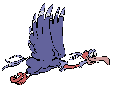Ok, here's what I posted on the other thread.
Reading some of the writings of Charles Dobbins, he used the term "location" in a different way than I see it used by some people on this forum.
This is the way it seems to me, and Paul, please correct me if I'm wrong.
Charles talked a lot about sign, and then used the term "location" in reference to how he set on sign. It seems that "sign" always came first in determining if and where he was going to set a trap. When he used the term "location", it was where that set was made in reference to the sign. Like if he found coyote sign on a two-track, the "location" he mentioned was which side of the two-track he was going to make the set, using natural indicators such as wind direction, landscape, etc., or if he was going to make the set at this spot or 20 yards away down the two-track.
But I often see the term "location" used on this forum and in videos to describe a landscape feature, such as the intersection of a hay field and a bean field.
In those instances, "location" is used on a macro scale, as it were, while Charles tended to use the term on a micro scale.
Charles was very good at finding and interpreting sign, and it seems to me that in just about every set he talked about setting the first thing he mentions is the sign. And then he talks about trap location in reference to where and what sign he found.
Like I said, Charles seemed to use the term "location" on a micro scale to determine where he was going to make a set in a small area where he found sign, whereas in some of the videos and discussions the term "location" is used on a macro scale to describe a geographical feature such as an edge, where sign may or may not be found.
Am I wrong about that, Paul?


